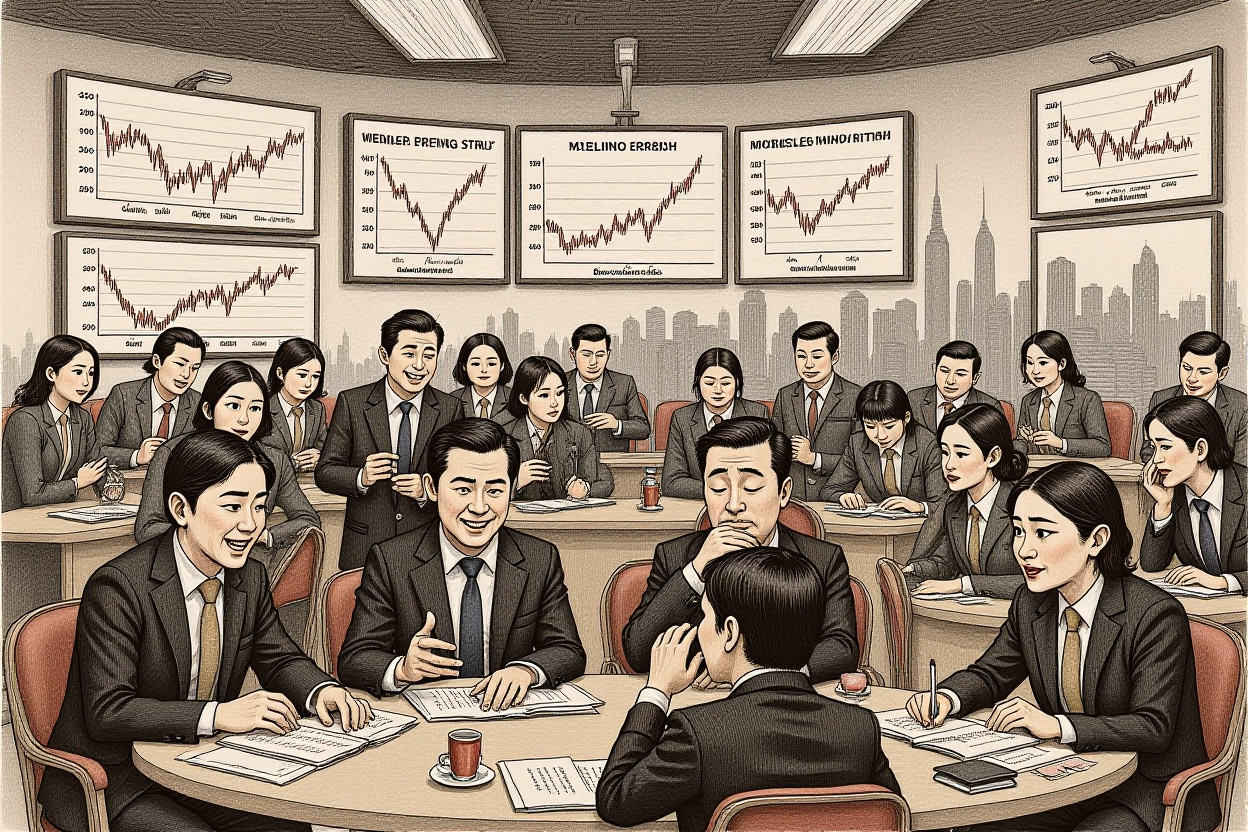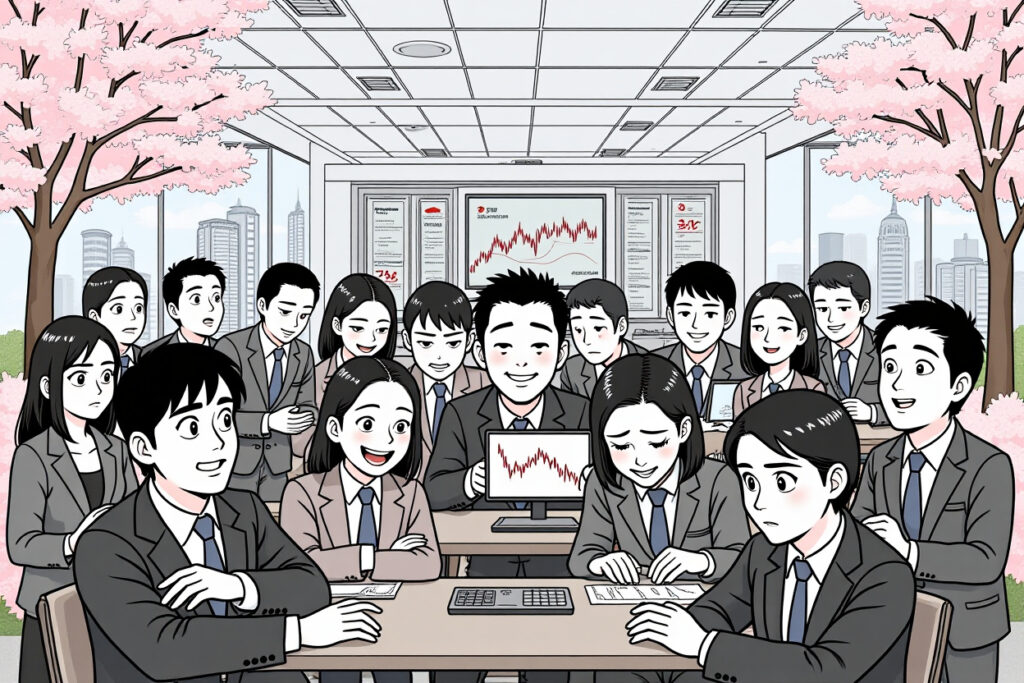Executive Summary
Yizheng Ankang (药捷安康), a clinical-stage biopharmaceutical company, experienced extreme volatility on the Hong Kong Stock Exchange (HKEX) during September 2025, highlighting structural vulnerabilities in index inclusion mechanisms and passive investment flows.
- Stock price surged 63% to HK$679 before crashing 54% within hours, erasing over HK$190 billion in market value
- Inclusion in Guozheng港股通创新药指数 (HKEX Connect Innovative Drug Index) triggered massive passive fund buying despite inadequate liquidity
- Company’s zero revenue status and small float amplified volatility, exposing index fund structural risks
- Event reveals potential systematic exploitation opportunities in emerging market passive investment ecosystems
- Regulatory attention needed on index inclusion criteria and information disclosure timelines
The Perfect Storm in HKEX Biotech Trading
Hong Kong’s biotech sector witnessed one of its most dramatic trading sessions in recent memory when Yizheng Ankang (药捷安康) shares experienced catastrophic volatility during mid-September 2025. This HKEX biotech stock demonstrated how structural market factors can combine to create extreme price dislocations, particularly in emerging sectors with limited liquidity. The episode serves as a cautionary tale for institutional investors pursuing Chinese healthcare investments through passive vehicles.
Market participants watched in disbelief as this HKEX biotech stock achieved spectacular gains followed by devastating losses within hours. The sequence of events exposed critical vulnerabilities in how index funds interact with lightly traded growth companies, especially in specialized sectors like biotechnology. For global investors tracking Chinese equity markets, the incident underscores the importance of understanding market microstructures beyond surface-level index compositions.
Company Background and Financial Position
Yizheng Ankang (药捷安康) represents a typical clinical-stage biopharmaceutical company with promising science but unproven commercial prospects. Founded in 2014, the company focuses on developing Tinengotinib (TT-00420), a multi-target kinase inhibitor for treatment-resistant cancers. Like many development-stage biotech firms, it operates without revenue while burning significant cash on research activities.
Financial disclosures reveal the company’s precarious position: 2023 revenue of RMB 1.18 million, zero revenue in 2024, and continued zero revenue through first-half 2025. Losses accumulated to RMB 340 million in 2023, RMB 275 million in 2024, and RMB 123 million in first-half 2025. These figures represent the classic profile of a pre-revenue biotech company entirely dependent on capital markets funding and future regulatory successes.
Mechanics of the Volatility Event
The extreme price movement in this HKEX biotech stock resulted from a confluence of technical factors rather than fundamental developments. Understanding these mechanics is essential for institutional investors navigating Chinese growth markets.
Index Inclusion Trigger
The critical catalyst emerged on August 25 when Yizheng Ankang (药捷安康) announced its inclusion in several Hang Seng Index series components, including the Hang Seng HKEX Connect Innovative Drug Index. The formal inclusion date was set for September 8, creating anticipatory buying pressure among investors seeking to front-run expected passive fund flows.
According to Hu Ming (胡明), partner at Anhui Haifu Investment, “The company’s pipeline, specifically TT-00420 and other anti-cancer drugs, represents compelling ‘story’ concepts that particularly attract speculative capital, but lack fundamental support, making bubbles prone to collapse.” This commentary highlights how narrative-driven investing can disconnect from underlying fundamentals in specialized sectors like biotechnology.
Passive Fund Flow Dynamics
The inclusion mechanism created an extraordinary supply-demand imbalance. With only approximately 5.49 million shares actually floating (after accounting for cornerstone investor lock-ups), the stock typically traded around HK$10-20 million daily. Suddenly, index tracking requirements demanded over HK$600 million in forced buying from funds mirroring the Guozheng港股通创新药指数 (HKEX Connect Innovative Drug Index).
Seven ETFs and two feeder funds tracking the index, with aggregate assets exceeding RMB 24 billion, needed to allocate approximately 2.63% of their portfolios to Yizheng Ankang (药捷安康) shares. This created enormous buying pressure on extremely limited supply, inevitably driving prices to unsustainable levels. The HKEX biotech stock became a textbook example of technical buying overwhelming fundamental valuation anchors.
Structural Market Vulnerabilities Exposed
This volatility event revealed several structural weaknesses in how emerging market indices incorporate newly public companies, particularly in sectors favored by speculative capital.
Liquidity Considerations in Index Construction
Wang You (王友), Chairman of Anhui Haifu Investment, identified three converging factors: “This incident actually resulted from three factors working together. Yizheng Ankang just IPO’d, with temporarily insufficient investor communication, not yet fully conveying pipeline status, commercialization pathways and other key information to the market, leading to excessive expectation gaps.”
The Guozheng港股通创新药指数 (HKEX Connect Innovative Drug Index) selection methodology screens stocks by first eliminating those with average daily turnover below HK$10 million over the past year, then selecting the top 50 by average market capitalization. While Yizheng Ankang technically met these criteria, the rules proved inadequate for ensuring sufficient liquidity to accommodate index fund flows without extreme price distortions.
Information Transparency Issues
A significant concern emerged regarding disclosure timelines. Guozheng Index Company implemented the changes without advance notice, and as of September 18, their official website still hadn’t updated sample details to reflect Yizheng Ankang’s inclusion. However, exchange ETF creation/redemption lists already showed the stock as a component.
This information asymmetry disadvantaged ordinary investors who couldn’t access critical changes in real-time. When contacted by Phoenix Finance, Shenzhen Stock Information Company (compiler of the index) maintained continuous phone busy signals. Parent company Shenzhen Stock Exchange representatives confirmed the website hadn’t been updated but cited the company’s HKEX listing making it “not particularly clear,” suggesting jurisdictional complexities in cross-border information dissemination.
Systemic Implications for Passive Investing
The Yizheng Ankang episode illustrates broader concerns about passive investment ecosystems in emerging markets, particularly regarding systematic exploitation opportunities.
Index Inclusion Arbitrage Patterns
Wang You (王友) noted this represents a common ETF ecosystem issue: “Now global passive investment represents an increasingly large proportion, but ETFs select stocks of varying quality.” Markets contain systematically exploitable patterns like “index inclusion arbitrage,” where capital埋伏 (ambushes) small-cap stocks soon to be included in indices, particularly sector hot concept stocks, “waiting for passive funds to lift the sedan chair before shipping at high levels.”
This HKEX biotech stock event demonstrates how sophisticated players can identify and exploit predictable passive fund flows. The strategy involves identifying potential index additions, establishing positions ahead of formal announcements, then liquidating positions after forced buying pushes prices to artificial highs.
Low Liquidity Harvesting Strategies
Beyond simple arbitrage, the event revealed potential for “low liquidity harvesting” – targeting illiquid stocks in markets like HKEX or A-shares, creating short-term trading heat to attract ETF passive allocation. Wang You warned that without regulatory intervention, such strategies would target more new listings, especially in hot sectors like biotech and new energy, forming an “IPO → speculation → index inclusion → cash out” closed loop.
This HKEX biotech stock case may encourage more frequent arbitrage activity across Chinese growth markets. The profitability demonstrated by such extreme moves creates incentives for repetition, potentially destabilizing entire sectors favored by passive investment products.
Risk Management Considerations for Institutional Investors
The extreme volatility in this HKEX biotech stock offers important lessons for sophisticated market participants navigating Chinese growth equities.
Due Diligence Beyond Index Membership
Institutional investors must look beyond simple index inclusion when evaluating Chinese growth companies. The Yizheng Ankang case demonstrates that index membership alone provides no quality guarantee, particularly for recently public companies with limited operating history. Fundamental analysis remains essential despite the convenience of passive investment vehicles.
Investors should pay particular attention to float composition, trading liquidity, and shareholder concentration when considering investments in recently listed Chinese companies. These factors dramatically influence potential volatility regardless of underlying business quality or index membership status.
Monitoring Index Methodology Changes
Sophisticated investors should closely track index methodology adjustments and potential constituent changes. The quarterly rebalancing schedule for major indices creates predictable opportunities for front-running strategies. Understanding these timelines allows institutional investors to anticipate technical price pressures unrelated to fundamental developments.
For this HKEX biotech stock, advance knowledge of index inclusion criteria and rebalancing schedules might have helped investors avoid disastrous entry points or even profit from the predictable volatility pattern. Resources like the Guozheng Index Company website and exchange ETF creation/redemption lists provide critical information for anticipating technical flows.
Regulatory and Market Structure Implications
The Yizheng Ankang volatility event raises important questions about market structure safeguards and regulatory oversight in rapidly evolving Chinese capital markets.
Potential Regulatory Responses
Market regulators might consider several responses to prevent similar incidents. These could include minimum liquidity requirements for index inclusion, longer observation periods for newly public companies, or improved disclosure requirements around index changes. The China Securities Regulatory Commission (CSRC 中国证监会) might collaborate with Hong Kong regulators on cross-border listing standards given the interconnection between markets.
Exchange-traded fund providers themselves might reconsider replication methodologies for illiquid constituents, potentially employing sampling techniques rather than full replication when liquidity proves inadequate. Such adjustments could mitigate the price impact of forced buying on extremely limited floats.
Market Participant Responsibilities
The incident underscores responsibilities across market participants. Investment banks underwriting IPOs should ensure adequate float and investor education. Index providers must balance representation with practicality in constituent selection. Asset managers should implement safeguards against excessive concentration in illiquid names, even when index weights suggest otherwise.
Ultimately, this HKEX biotech stock episode serves as a reminder that market structure matters as much as individual company fundamentals in emerging markets. Sophisticated investors must account for technical factors alongside traditional analysis when allocating to Chinese growth equities.
Navigating Future Market Dislocations
The dramatic rise and fall of Yizheng Ankang shares provides valuable insights for global investors allocating to Chinese healthcare and biotechnology sectors. While the company’s core technology remains unchanged by the price volatility, the market structure revelations should inform future investment processes.
Institutional investors should enhance their monitoring of technical market factors including float analysis, index flow projections, and arbitrage activity patterns. Combining fundamental research with technical market structure analysis creates a more comprehensive investment approach for navigating volatile emerging markets. The HKEX biotech stock episode demonstrates that in modern markets, understanding capital flows proves as important as understanding business fundamentals.
Forward-looking investors might consider establishing systematic processes for identifying potential index inclusion candidates ahead of formal announcements, while simultaneously implementing rigorous risk management around position sizing in low-liquidity names. As passive investing continues growing globally, the interaction between index flows and individual securities will likely create more such opportunities and risks across markets.




